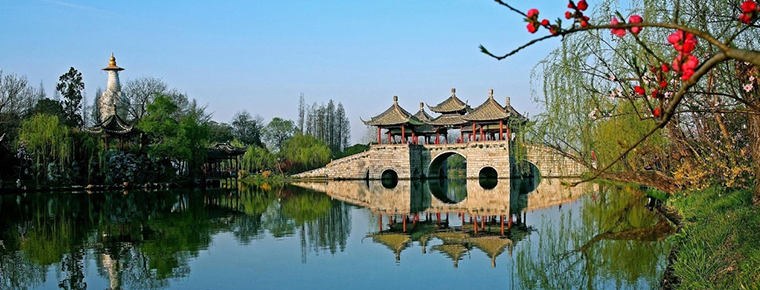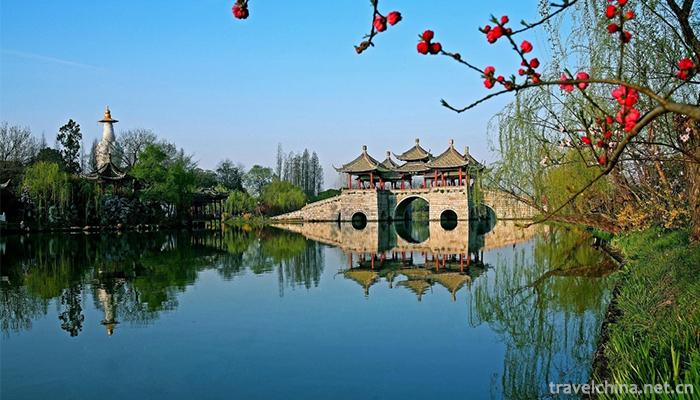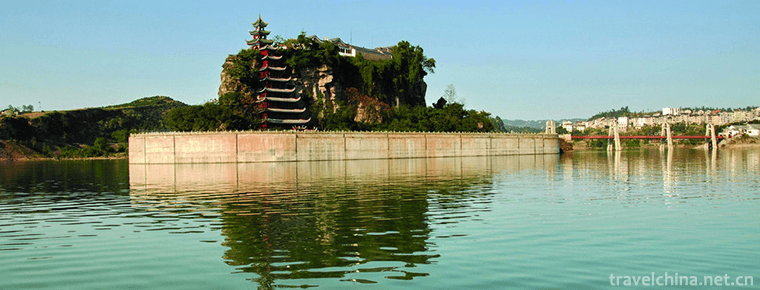2018-12-06

- By ChinaWiki.net
- Chinese Edition
- 2019-04-21
Landscape Architecture in Yangzhou
brief introduction
Yangzhou gardens began in the Western Han Dynasty, flourished in the Sui and Tang Dynasties, matured in the Song and Ming Dynasties, and flourished in the Qianlong Period of the Qing Dynasty. The book "Garden Governance" written by the Ming Dynasty is the first monograph on gardening in the world. It highly summarizes the theory and practice of gardening in Yangzhou, and is still regarded as a classic by gardeners.
He Yuan Shuixin Pavilion
Artistic modeling
The traditional gardens constructed in Yangzhou show unique beauty not only in appearance, but also in structure and detail. It integrates the north and the south, and has its own style. It is magnificent and beautiful, elegant and healthy. The lofty and upright halls and pavilions, the thick and ancient rockery, and the exquisite and leaky walls are beyond the scope of other places. His poetry and painting character and exquisite style highlight the unique style and achievements. "Yangzhou is famous for its scenic gardens and its famous women for its stone bases." "Yangzhou should be the first place in building houses."
Geyuan Baoshan Building
Construction style
Yangzhou's "combination of house and yard" has its unique achievements and style in architecture, and it is an area to study traditional architecture in China. Building a homestead, choosing materials and doing meticulous work, not only pursues the overall effect, but also makes every effort to carve in the subtleties. Landscape architecture in the corridor, window carvings, grinding brick wall, etc., all reflect the exquisite workmanship of building in Yangzhou.
Slender West Lake Wuting Bridge
Yangpai stacked stone pays attention to "hollow and extraordinary", or risk-taking, or floating method to move. In the cave, there are stone beds, benches, tables, water diversion and bridges. There are holes in the cave, which can be traveled, seen and inhabited. The holes are deep and unfathomable, and there are many dangers in the abrupt places. In the early Qing Dynasty, the painter Shi Tao created the "Sheet Stone Mountain House", which is "the sole foundation of the human world". "Four Seasons Rockery", "Spring Mountain, Summer Mountain, Autumn Mountain, and Winter Mountain" in Geyuan have pushed the Yangtze School to a new peak.
Yangzhou Garden is good at making "dry garden water", creating mountain streams, waterfalls, rivers, sea waves and other shapes, boats, bridges, water pavilions, pools and other waterfront scenery, making people feel like water without water, water in mind, its generalization and refinement of water scenery is more symbolic and artistic. In the allocation of flowers and trees, attention should be paid to variety, shape, color, implication and the relationship with other landscapes in order to pursue exquisiteness.
Stone hill house
Inheritance significance
Landscape construction techniques in Yangzhou have gradually formed into a complete and unique art category. The inheritance, protection and development of this art not only plays an indispensable role in maintaining and utilizing the famous gardens and historic blocks of past dynasties, but also plays a prominent role in building cultural cities, garden cities, beautifying people's lives and building a harmonious society.

Ask a Question
Your email address will not be published.



0 Questions